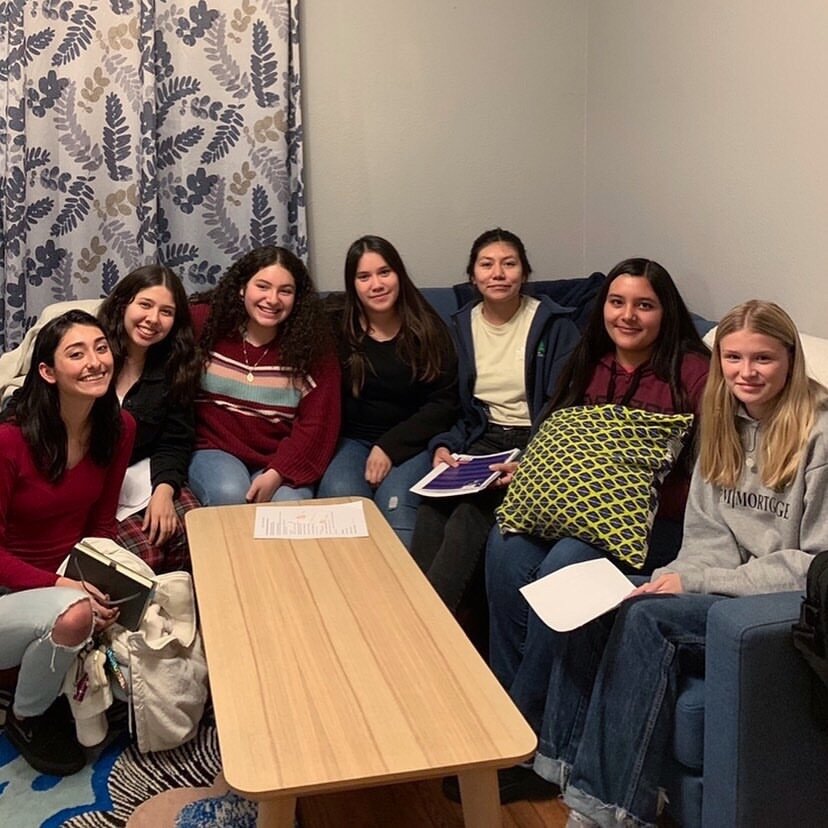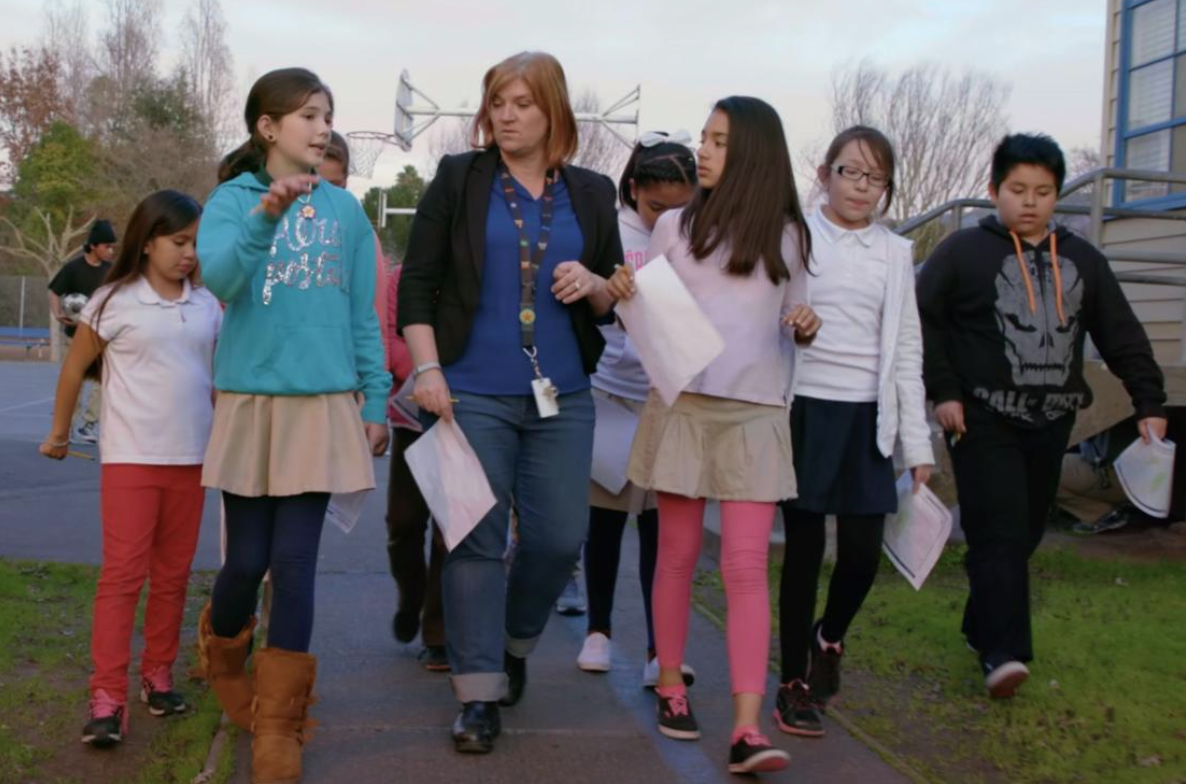American Canyon and other south county residents now have a Family Resource Center at the Napa Junction Magnet School campus on 500 Eucalyptus Drive. This Family Resource Center is the result of a collaboration between the Napa Valley Unified School District, Napa Valley Education Foundation, On the Move and the city of American Canyon. Napa Valley Vintners invested more than $1 million to build the center.
Young people are stepping up flaunting issues close to their hearts, exercising their social media savvy and connecting with fellow students and elected representatives in a unified chorus fighting for change. Rising-star activists abound in the Napa Valley and include students Kennedy Ervin, Aedyn Frazer, Bertha Gallegos, Marisa Balades, Brooke Shein and Annika Lindroos. Their presence will be felt — and heard- at the fourth Women’s March on Saturday, Jan. 18.
Two years ago, a group of then-sixth graders from Phillips convinced the city and Napa Mayor Jill Techel to add much-needed streetlights and sidewalks to areas around the east Napa school. Today, those students, and that journey, are the stars of a new documentary released on April 2 on both Amazon Prime and the Roku Channel.
“With so many recent policy changes, the Napa Citizenship Legal Services (CLS) Collaborative wants to ensure that all Napa County residents and businesses are updated on the latest information and know how to access reputable local resources,” said Ellen Dumesnil, Executive Director of International Institute of the Bay Area and the lead agency for CLS.
More than 1,600 parents enroll in Parent University each year. Enrollees can pick courses on subjects like English as a second language, parenting techniques, nutrition, and mental health. Ruiz says some of the courses have a special focus on how parents can keep their families healthy.
As a new school year gets underway, a years-long push to better prepare kindergartners in “high-need” areas across Napa Valley for their first year of school is being lauded as a success. But, the new year also marks a turning point for the effort, known as the Napa Valley Early Learning Initiative; one that could put its progress at peril.
Local nonprofit groups will share $1.1 million in grants for programs designed to make Napa County residents healthier, from smokers seeking to kick the habit to young mothers needing transitional housing.
What impact can a dozen Hispanic students make? Students at Napa High School are hoping a big one. For the past year, students in Leadership Academy Youth Leaders in Action, or LAYLA, have been working on a documentary that shows the struggles of two Latina students at the school.
For many children of Mexican immigrants living in Napa, accounts of their family’s often harrowing first border crossings into the U.S. have remained unspoken. A group of Napa High students is taking the first step in capturing these stories of sacrifice and perseverance through their “Las Voces de los Mexicanos: Napa Valley Oral History Project.”
What is the introduction to the United States Constitution called? How many senators make up the U.S. Congress? How many voting members are in the House of Representatives? Most people born in the United States never have to answer these questions outside of a high school civics class. But for foreign-born U.S. residents like 36-year-old Jaime Torres, knowing such answers is key to becoming a full-fledged U.S. citizen.
Members of Leadership Academy Youth Leaders in Action (LAYLA) will present the results of their Mexican oral history project at the Goodman Library in April. The project, titled “Las Voces de Los Mexicanos: Napa Valley Oral History Project,” recorded the experiences of the local Mexican immigrant community for the Napa County Historical Society’s collection.
A recent Bay Area report highlighted Napa’s McPherson Elementary School as an example of a successful “community school.” Community schools are those that bring support and services — like health care, food programs and parent workshops — into the schools to “promote the overall well-being of children and their families.”
When she thinks about the struggles her young daughters face as English-learners, Maria Munoz begins to cry. What worries her most is that she won’t be able to help them as they grow older, especially as they move into higher grade levels.
A report out here in California last week shows that less than half the families in this state are middle-class anymore. Yes, part of that's a bad economy, but the Public Policy Institute of Calfornia says it's bigger than just that -- that it's part of 30-year trend.
The outstanding turnout for the first Success After High School conference, held on Saturday morning at Napa Valley College, surprised even its planners. More than 250 participants, primarily students with their parents, showed up at the Little Theatre at 8:30 a.m. to learn how to plan for college and careers.
Nearly 300 people met at McPherson Elementary School in Napa Saturday to complete the construction of a new garden as well as clean, paint and build benches for what could be a future plaza for the neighborhood.
A group of 70-plus Napa teens are proving that collectively they can make a difference in their community. The teens are part of group from On the Move and Leadership Academy, LAYLA - Leadership Academy Youth Leaders in Action under the direction of Leslie Medine.
If you've only been to Napa as a visitor it might be hard to understand why that city needs a Democracy Zone. The vineyards that we've all seen, those treasured rows of gold-tinged leaves, don't need a Democracy Zone, and neither do the people who live in the stately country homes that oversee those vines.
Sometimes it takes youths to grease the wheels of change and make things happen. On a windy Friday evening it was a group of Napa High School students, who are involved in an innovative leadership program, doing the greasing.
Growing up in Napa, Karla Gomez knew she was different but wasn’t sure how. There were little things throughout her childhood that reminded Gomez of the disparities, such as her inability to participate in many of the activities her peers were involved in, she said.

















